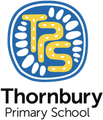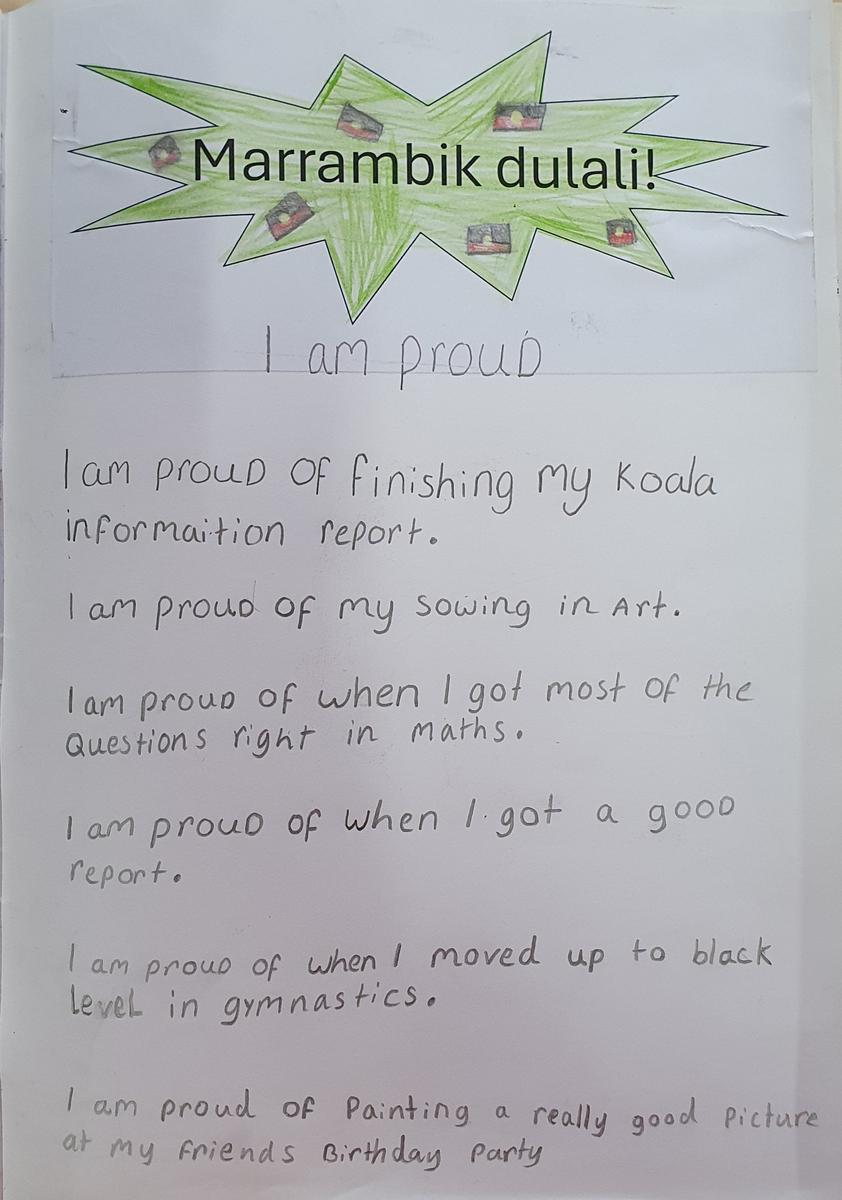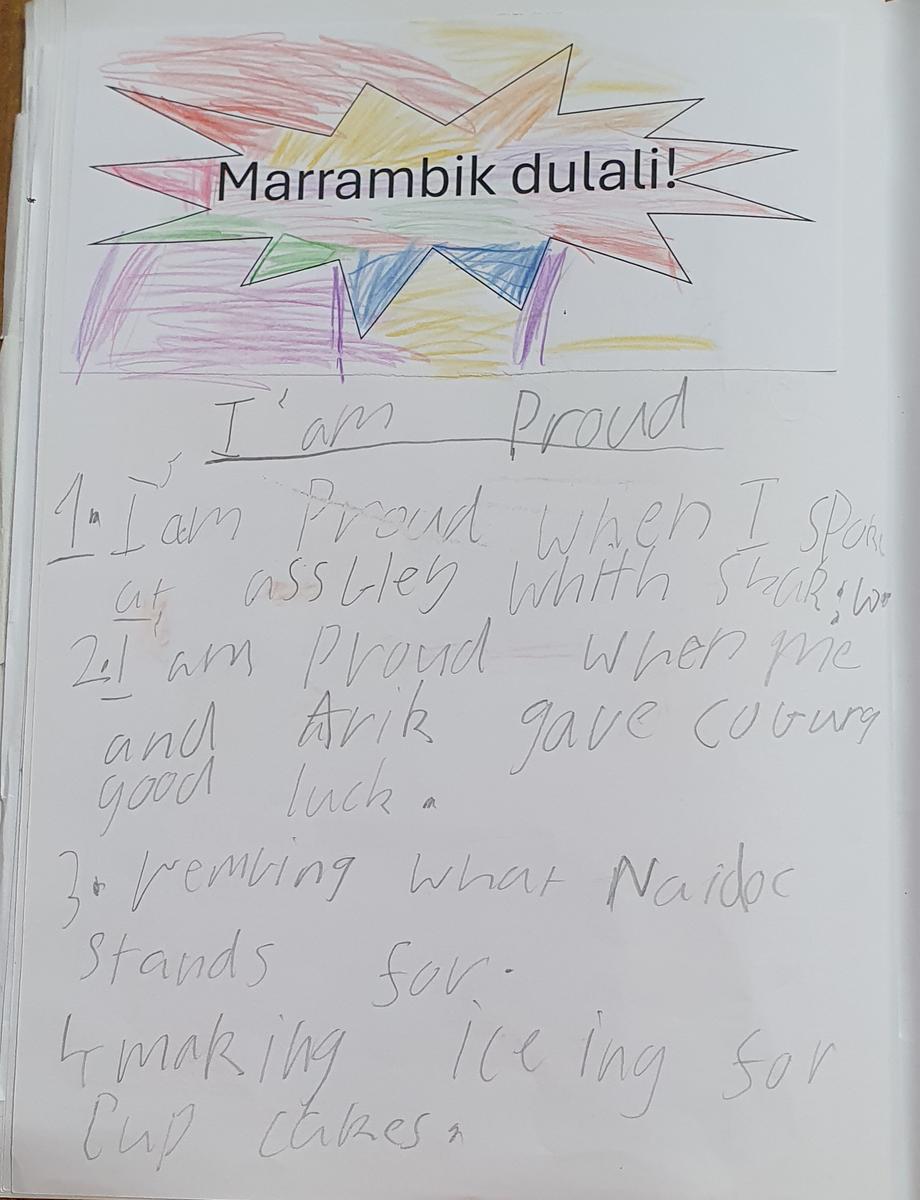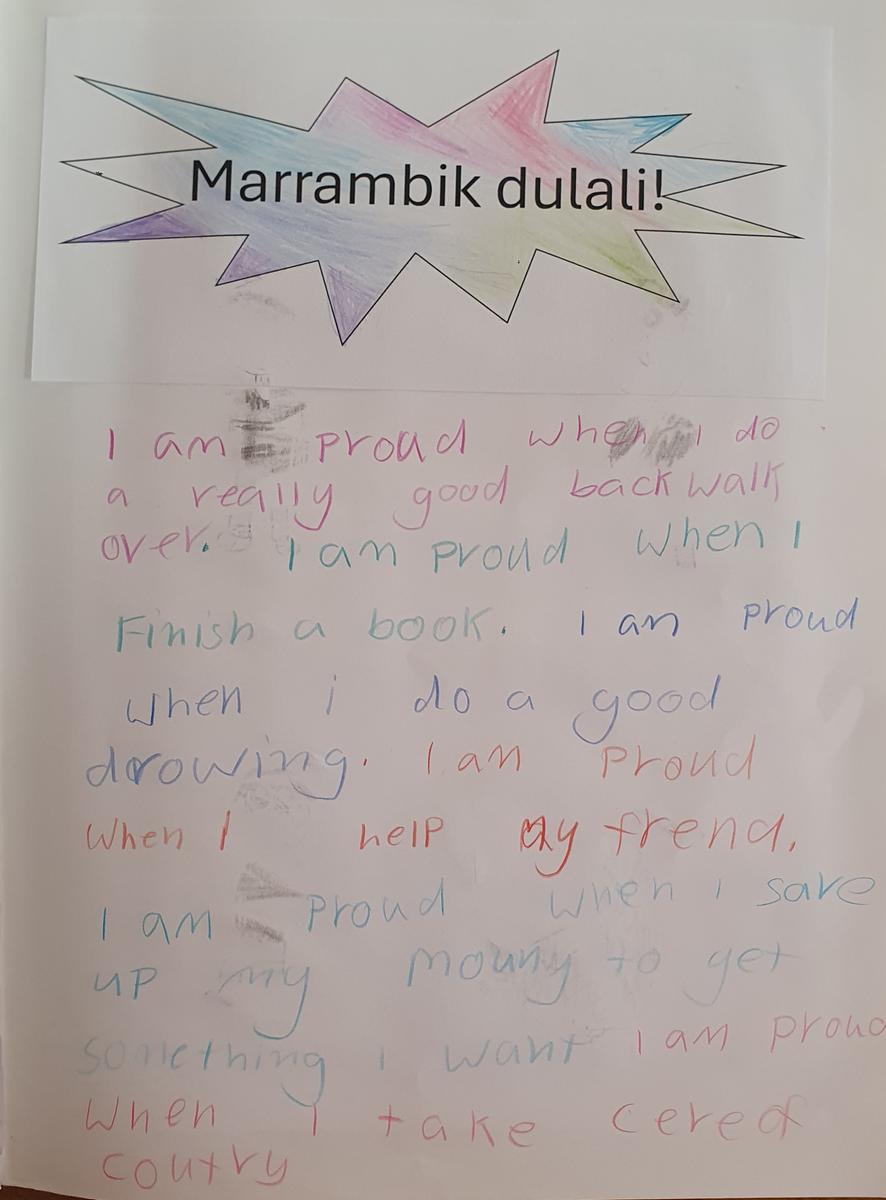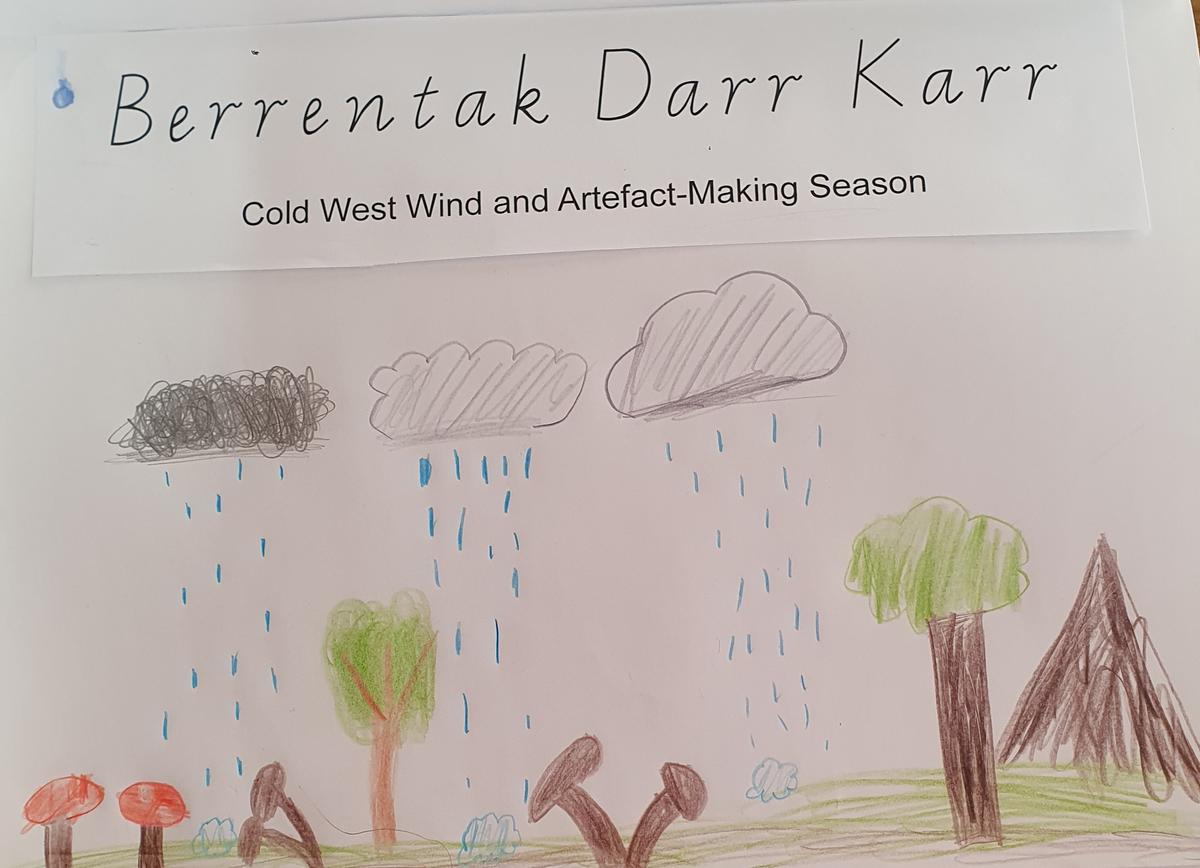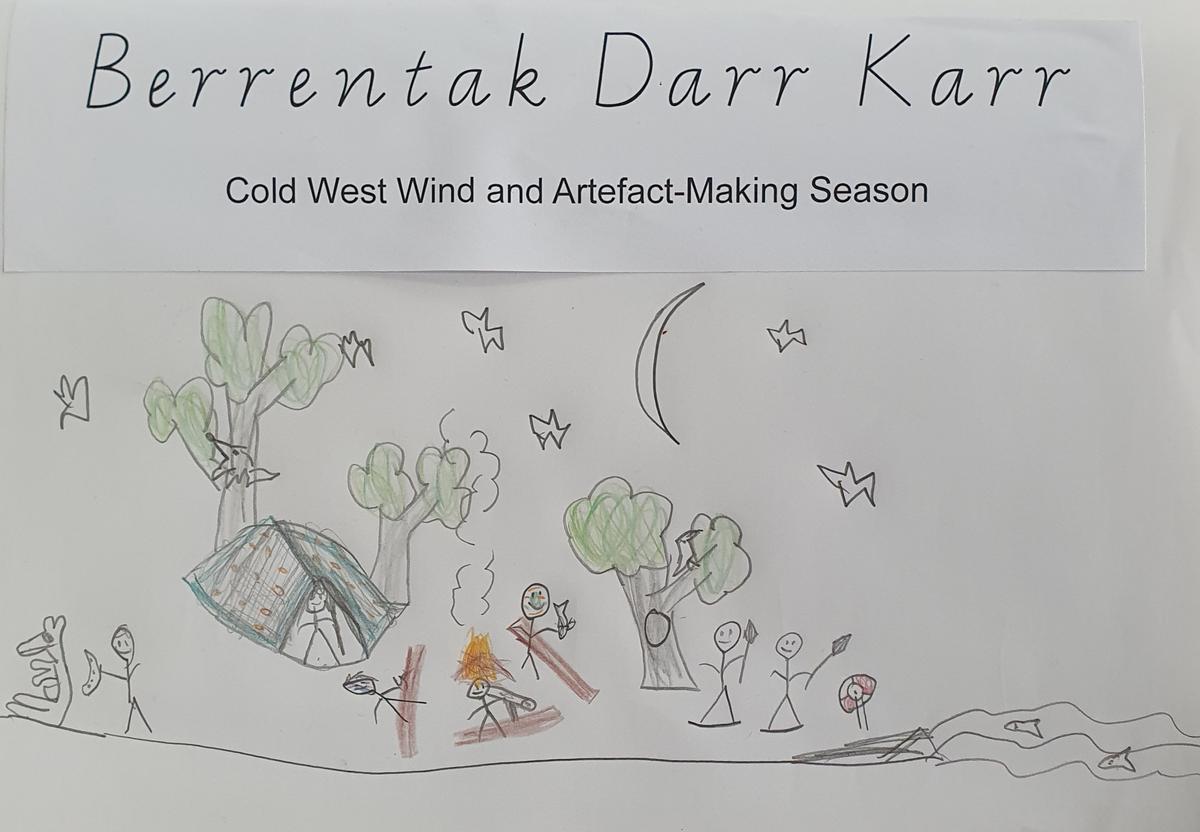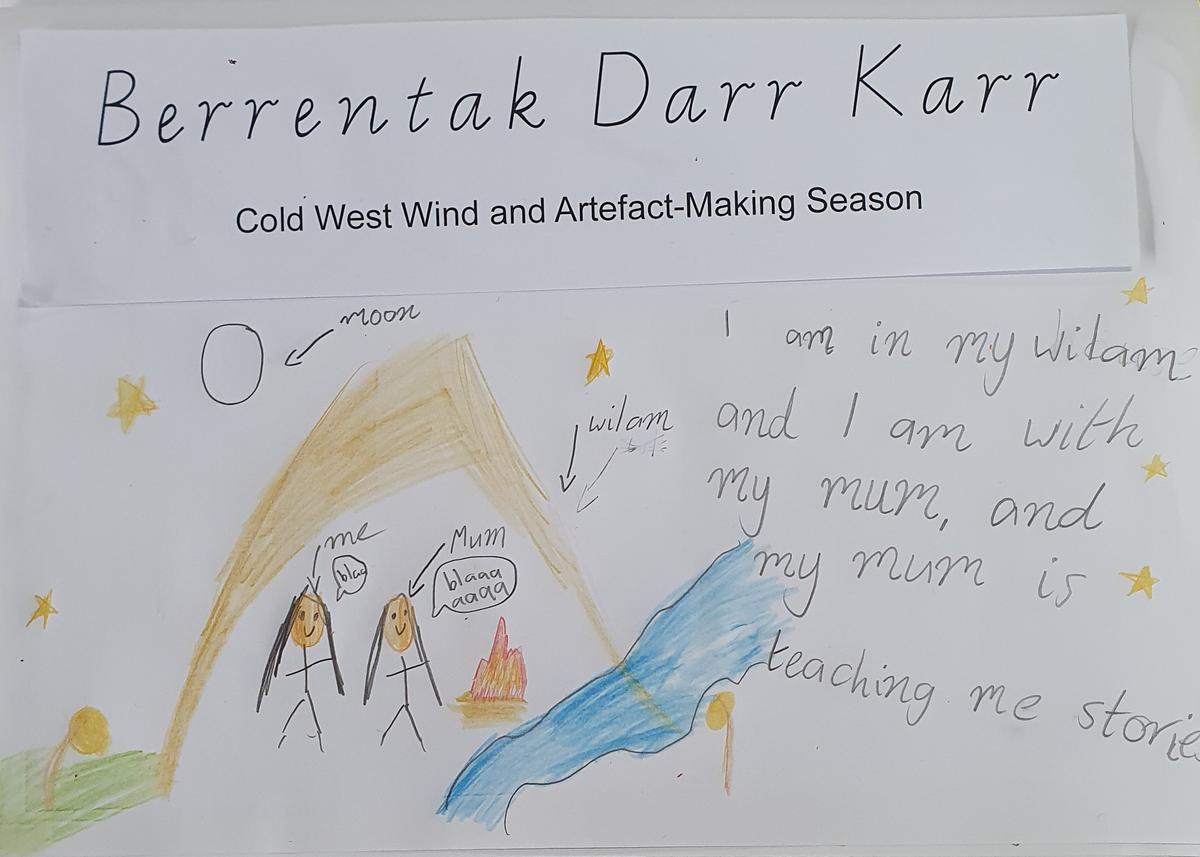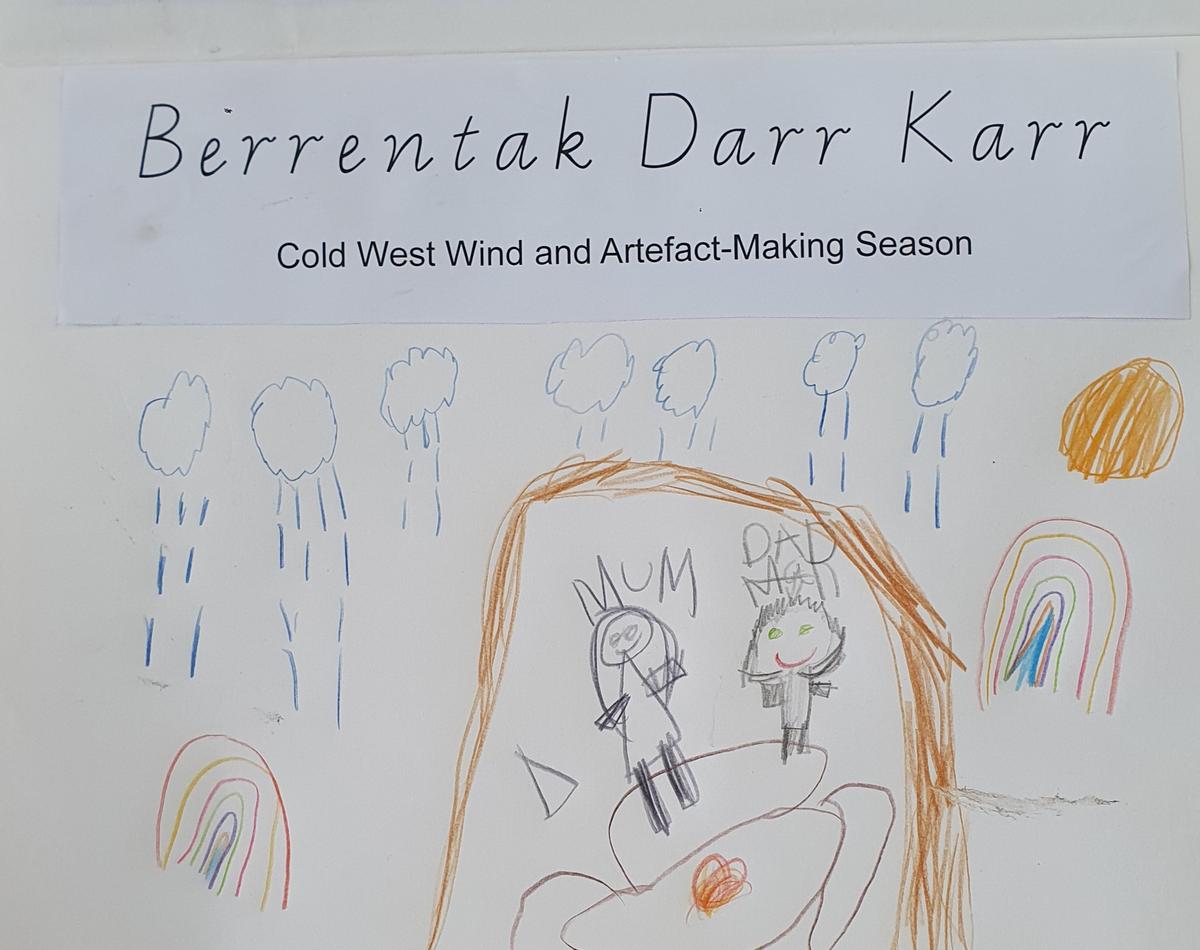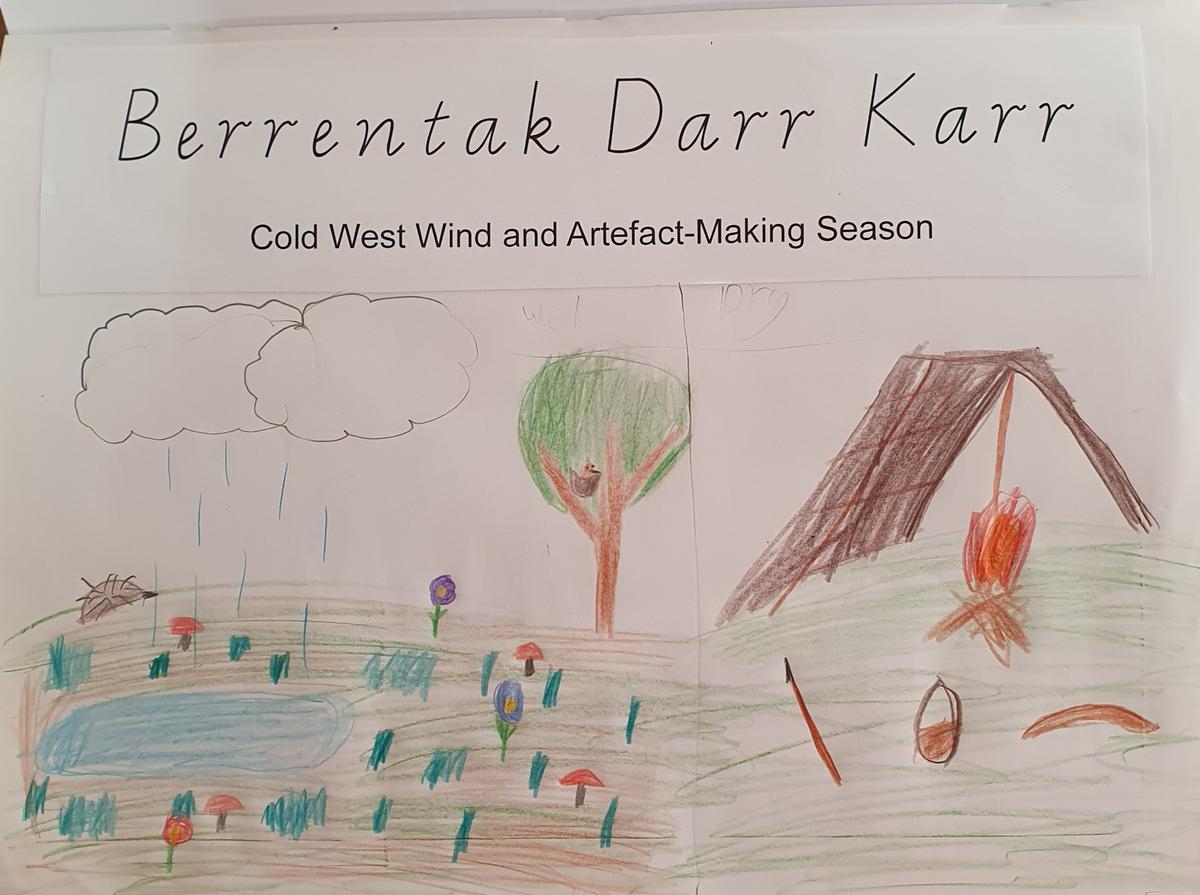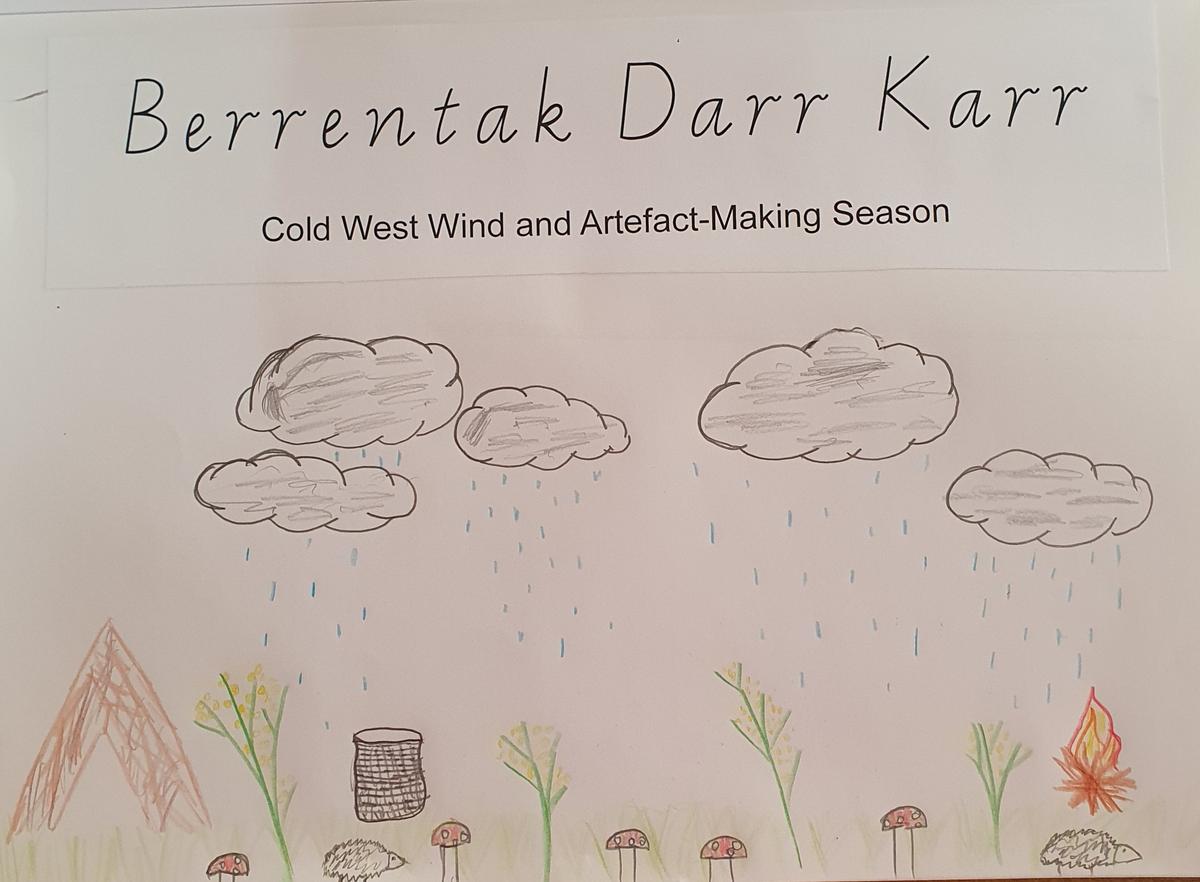Language and Culture
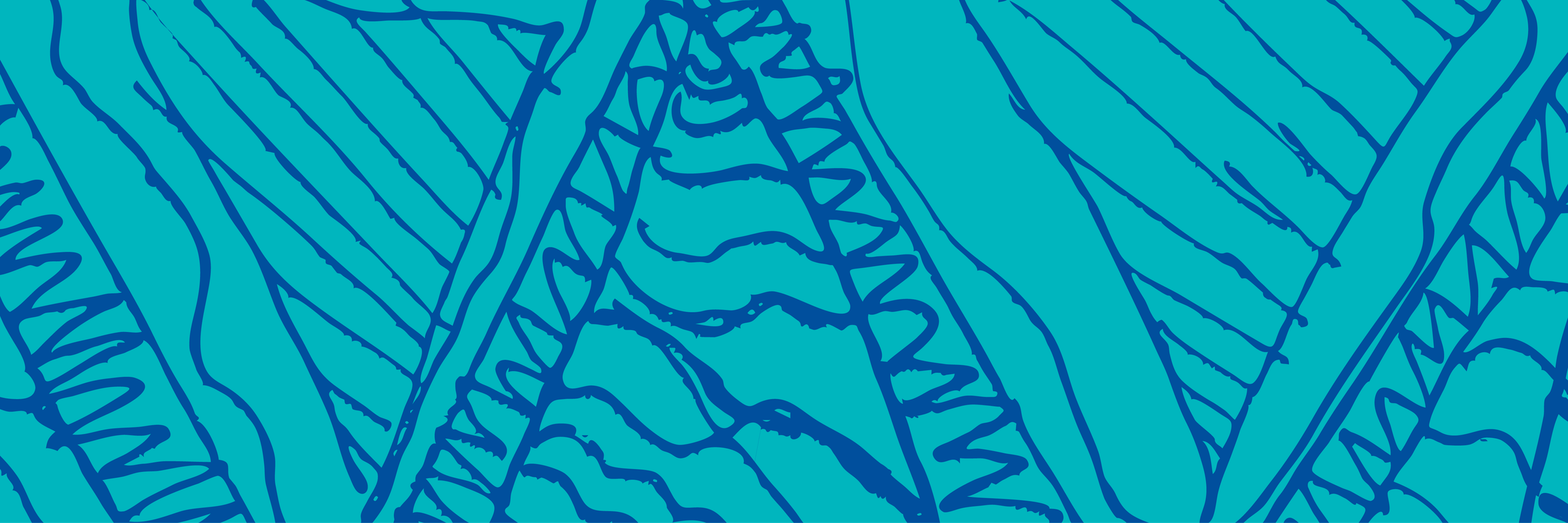
Kii, Deadly TPS community, biladu-njan wat/how are you all? And in the words of my Yawuru language...Ngaji gurrjin/Hello everyone!
We started Term 3 with a NAIDOC focus, with all year levels learning about this year’s theme, Blak, Loud & Proud! Students in Years 3-6 went a bit deeper and learned about the history of NAIDOC, how it started as a day of protest and became a week of celebrating Aboriginal and Torres Strait Islander achievements.
Students have been practising and using the phrase Marrambik dulali! (I am proud!) to celebrate their achievements at school.
Foundation students are continuing to learn and practice basic greetings and introductions, simple classroom commands and requests. The vocabulary focus has been on reinforcing their learning of the eight Woiwurrung body parts nouns and the accompanying ‘Heads, Shoulders..’ song. Students are also learning a new song: ‘If You’re Happy and You Know It’. Use the attached audio and lyrics to learn and practise at home with your children:
Barrbunin-warr ngarr-gi-warr djilba marnang-in / happy-you know-you hit(clap) hand-your
Barrbunin-warr ngarr-gi-warr djilba marnang-in / happy-you know-you hit(clap) hand-your
Barrbunin-warr ngarr-gi-warr yumarrala-warr / happy-you know-you give-you
Barrbunin-warr ngarr-gi-warr djilba marnang-in/happy-you know-you hit(clap) hand-your
Students in Years 1-6 continued to learn about the different sounds in the Woiwurrung language, and depending on students’ year level, the associated letter patterns used to record these sounds, regularly practising through fun activities. All classes completed assessment tasks with all students showing their varying and amazing skills in reading and writing Woiwurrung words.
Students have also been learning about the following Wurundjeri Seasons in Melbourne:
- Berrentak Darr-Karr - Cold West Wind and Artefact-Making Season. This season takes place from about mid-May through to the beginning of August and is marked by the cold west winds blowing throughout this winter period.
This season was not conducive to much travel and Wurundjeri Woiwurrung people spent much of their time around their wilams/homes, repairing or making new tools and necessary equipment in preparation for the active and bountiful spring period ahead. Although tools and artefacts were able to be made throughout the year, this was a time that was ideal for engaging the children in close instruction of various tool and equipment making skills. This was also a time when women’s pregnancies were developing.
The flowering of Silver Wattles signalled the end of this cold west and artefact-making season and the arrival of the morning frost and bark harvest season.
- Tangbilk Ningak - Morning Frost and Bark Harvest Season. This period of fairly clear and sunny days but cool, moderate winds that often results in more frequent morning frosts takes place throughout August.
The first flow of sap is stimulated by this late winter sunshine in early August and facilitates bark harvesting. Harvesting bark at this time allows time for trees to heal before the height of summer.
Time was devoted to making canoes, tarnuks (large wooden bowls) and other bark implements. New canoes were made to navigate flooded lowlands and for fishing. Tarnuks and other bark artefacts were made for bushfood gathering in the coming seasons of bounty. Wattles and orchids are blooming. Women were often entering their last term of pregnancy.
(Reference for the seasons: The Eight Wurundjeri Seasons in Melbourne, Jim Poulter, 2015)
Have a chat with your child/ren about what they are learning.
Twaganin (Woiwurrung) Galia (Yawuru) / See you later
